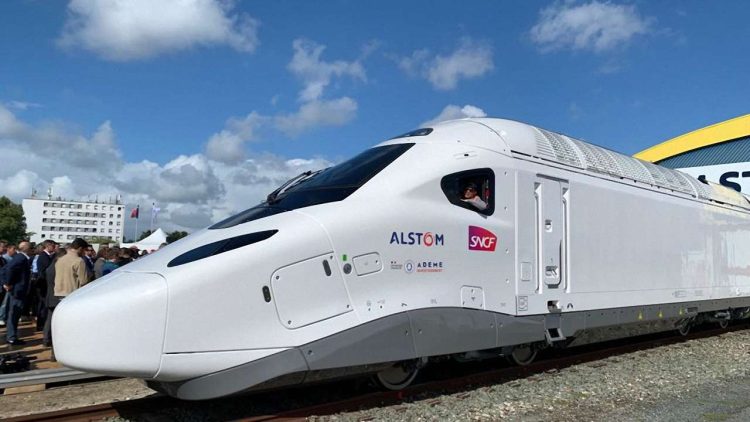On Friday, 9th September, Alstom unveiled the production line for its latest TGV trains, the TGV M, which are due to become operational on the French national network in 2024.
The unveiling took place at Alstom’s La Rochelle workshops, and results from collaboration between Alstom and the Rolling Stock and TGV-Intercités divisions of SNCF Voyageurs.
Present at the launch were Christophe Fanichet (Chairman and CEO of SNCF Voyageurs), Alain Krakovitch (Director of TGV-Intercités), Xavier Ouin (Industrial Director of SNCF Voyageurs), and Jean-Baptiste Eyméoud (President, Alstom France).

The new units feature increased modularity so that train lengths can be adjusted to seven, eight, or nine cars according to market needs. They provide a 20% increase in onboard space from the current maximum of 634 seats up to a new maximum of 740 seats. The interior can also be reconfigured by converting first-class space into second-class or vice versa, and removing or adding seats, bicycle, or luggage spaces.
For people with reduced mobility, the new trains offer full accessibility. A pivoting lifting platform allows wheelchair users to access the train independently, a sound system allows visually impaired people to locate the doors when they board, and on-board there is a room reserved for wheelchair users.
The TGV M incorporates new features and different technical specifications to the current fleet, so SNCF Voyageurs has initiated a training programme for all staff involved in its operation and maintenance. During development TGV maintenance staff were involved at an early stage, and it is hoped that maintenance costs will be reduced by around 30%.
The new trains have more carriages than the current fleet, therefore all the current TGV operating procedures, including driving, traffic supervision, train preparation in stations, stabling, depots, and cleaning, need modification.
Drivers were involved in the design of the driver’s cab. Using virtual reality goggles, a hundred drivers were given a virtual tour of the cab, with a choice of three space designs. A lot of attention was paid to the comfort, space, and ergonomics of the driver’s cabs, they now have indirect lighting, controls have been positioned to facilitate work gestures, and most of the driver information systems in the driver’s cab have been digitized.
By the end of this year, dynamic testing at 200 km/h will be carried out at Velim in the Czech Republic) by the end of 2022. This opens the first chapter in a long period of testing for this high-speed train.
An initial order has been placed for 115 units (100 domestic and 15 international), which will be used for both INOUI and OUIGO TGV services. Ten of Alstom’s 16 sites in France were involved in the design of the new trains.
Ten of Alstom’s 16 sites in France were involved in the design of the new train:
Belfort for the locomotives;
- La Rochelle for the carriages, logistical and service support, and project management;
- Villeurbanne for the computerized control and command system, passenger information and on-board equipment;
- Ornans for the engines;
- Le Creusot for the bogies;
- Tarbes for traction;
- Toulouse (COE electrical) for the electrical circuits;
- Petit Quevilly for the transformers;
- Saint-Ouen for design, signalling;
- Valenciennes for the study of the interior design elements.





Responses